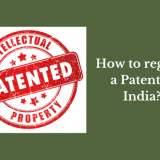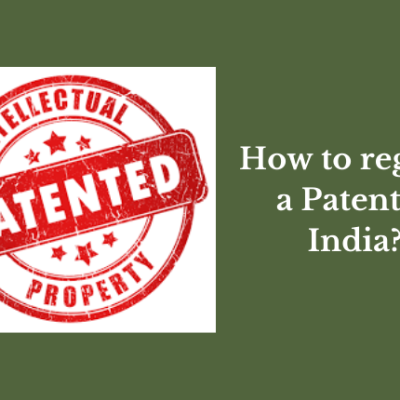For an invention to qualify for a patent, it must satisfy specific legal and technical criteria. Patent offices worldwide, including the Indian Patent Office (IPO), evaluate applications based on these criteria before granting patents.
Patentability Requirements
An invention must meet the following three main conditions to be patentable:
Novelty (Newness)
What is Novelty?
Novelty (or newness) is a fundamental requirement for obtaining a patent. An invention is considered novel if it has not been disclosed or made available to the public before the filing date of the patent application.
Legal Definition
According to Section 2(1)(l) of the Indian Patents Act, 1970, an invention is considered new if it has not been anticipated by prior art.
Key Criteria for Novelty
For an invention to be novel, it must:
✔ Not be published in any document, research paper, patent, or online source before the filing date.
✔ Not be publicly used or demonstrated before filing.
✔ Not be disclosed in prior patents or applications (even in another country).
Understanding Prior Art
What is Prior Art?
Prior Art refers to any information that is publicly available before the patent application date.
Examples of Prior Art:
Existing Patents: If a similar invention is already patented, it lacks novelty.
Scientific Papers: If a research paper describes the invention before filing, it loses novelty.
Public Demonstrations: If an inventor publicly demonstrates the invention at a trade fair, it cannot be patented.
Tests for Novelty
Absolute Novelty Standard
The invention must be completely new and should not exist anywhere in the world.
Example: If a researcher in the USA publishes a paper about a new battery technology, an Indian applicant cannot patent the same technology in India.
Anticipation Test
If the invention is already described in a prior document or patent, it is considered anticipated and cannot be patented.
Example: A published patent application with similar features can anticipate a new application.
Mosaic Approach (Combination of Prior Art)
If different pieces of prior art can be combined to describe the invention, it lacks novelty.
Example: If two research papers together disclose all the elements of an invention, it may be rejected.
Case Study: Novartis v. Union of India (2013)
Facts: Novartis applied for a patent on Glivec, a cancer drug.
Issue: The Indian Patent Office rejected it under Section 3(d), claiming it was a modified version of an existing drug.
Verdict: The Supreme Court ruled that Glivec lacked novelty because it was not significantly different from prior art.
Impact: This case strengthened patentability standards in India.
Loss of Novelty (Disclosure Issues)
An invention loses novelty if:
The inventor publicly discloses it before filing.
The invention is published in a journal or conference before filing.
It is used or sold before filing.
How to Protect Novelty?
✔File a provisional patent before disclosure.
✔ Use Non-Disclosure Agreements (NDAs) before discussing with investors.
✔ Keep research and developments confidential until filing.
Novelty is a strict requirement in patent law. If an invention is already disclosed in any form, it cannot be patented. Inventors must ensure confidentiality and conduct a prior art search before filing.
Inventive Step (Non-Obviousness)
What is an Inventive Step?
An inventive step (or non-obviousness) is a key requirement for obtaining a patent. It ensures that an invention is not just a minor improvement over existing technology but involves a significant technical advancement.
Legal Definition
According to Section 2(1)(ja) of the Indian Patents Act, 1970, an invention is said to have an inventive step if:
✔ It involves a technical advancement compared to existing knowledge (prior art).
✔It has economic significance.
✔ It is not obvious to a person skilled in that field.
Understanding Inventive Step
Technical Advancement
The invention should provide a new technical solution or a substantial improvement over known products or processes.
Example: A solar panel with higher energy efficiency due to a new material can be considered an inventive step.
Economic Significance
If an invention significantly reduces costs or improves efficiency, it strengthens the case for an inventive step.
Example: A battery that lasts twice as long as existing batteries may qualify.
Non-Obviousness
The invention should not be obvious to a person skilled in the field.
If an expert in that area can easily predict the invention using existing knowledge, it lacks an inventive step.
Example: If someone just adds a touchscreen to an already existing phone, it may be considered obvious and rejected.
Tests for Inventive Step
Problem-Solution Approach
Step 1: Identify the closest prior art (existing technology).
Step 2: Determine the technical problem that the invention aims to solve.
Step 3: Analyze whether the solution is obvious or inventive.
✔ If the solution is unexpected, it has an inventive step.
❌ If the solution is an easy modification, it lacks an inventive step.
Could-Would Test
Just because something could be done does not mean it would have been obvious to a skilled person.
Example: If a new drug formula could have been created using existing chemicals, but no expert thought of it before, it may be non-obvious.
Teaching-Suggestion-Motivation (TSM) Test
If existing research or prior patents suggest the same invention, it lacks an inventive step.
Example: If a textbook or patent describes a possible improvement, it may be considered obvious.
Case Study: Novartis v. Union of India (2013)
Facts: Novartis applied for a patent on a modified cancer drug (Glivec).
Issue: The Indian Patent Office rejected the application, saying the modification was obvious and lacked an inventive step.
Verdict: The Supreme Court ruled that the drug was not a major innovation and rejected the patent.
Impact: Strengthened inventive step criteria and stopped minor modifications (evergreening) of pharmaceutical patents.
The inventive step ensures patents are granted only for true innovations and not minor improvements. The invention must be technically advanced, economically significant, and non-obvious to an expert in the field.
Industrial Applicability
What is Industrial Applicability?
Industrial Applicability is a fundamental criterion for patentability, ensuring that an invention can be manufactured, used, or applied in an industry. This requirement prevents patents from being granted for purely theoretical or abstract ideas.
Legal Definition
According to Section 2(1)(ac) of the Indian Patents Act, 1970, an invention is considered industrially applicable if it can be made or used in an industry.
Key Features of Industrial Applicability
The Invention Must Be Useful
The invention must serve a practical purpose and provide a real-world benefit.
Example: A new type of biofuel that can be used in vehicles meets this requirement.
The Invention Must Be Capable of Being Reproduced
The invention should be able to be manufactured in large quantities or consistently used in an industrial setting.
Example: A new drug formulation that can be mass-produced qualifies, but a one-time chemical reaction that cannot be repeated does not.
The Invention Must Have a Commercial or Industrial Application
It should be applicable in fields like manufacturing, pharmaceuticals, agriculture, or technology.
Example: A new method of producing steel that makes the process more efficient is patentable.
What is NOT Considered Industrially Applicable?
Abstract Theories or Laws of Nature
Example: A new mathematical formula or theory of relativity is not patentable because it cannot be directly applied in an industry.
Inventions That Cannot Be Used in an Industry
Example: A method of meditating or a purely artistic creation lacks industrial applicability.
Perpetual Motion Machines
Example: A machine that claims to run indefinitely without energy input is against the laws of physics and cannot be applied in an industry.
Case Study: Dimminaco AG v. Controller of Patents (2002)
Facts: Dimminaco AG filed a patent for a process of making a vaccine for poultry disease.
Issue: The Indian Patent Office rejected it, arguing that biological processes cannot have industrial applicability.
Verdict: The Calcutta High Court ruled that since the vaccine could be mass-produced and used in poultry farms, it was industrially applicable.
Impact: Expanded the interpretation of industrial applicability to include biotechnology and pharmaceutical inventions.
Industrial applicability ensures that patents are granted only for inventions that can be used in industries and provide practical benefits. It excludes abstract ideas, natural discoveries, and impractical inventions from patent protection.
Non-Patentable Subject Matter in India (Section 3 & 4 of Patents Act, 1970)
Under the Indian Patents Act, 1970, certain inventions are not patentable, even if they meet the basic criteria.
1. Frivolous or Contrary to Natural Laws (Section 3(a))
Example: A perpetual motion machine (which defies the laws of physics).
2. Mere Discovery of a Scientific Principle (Section 3(c))
Example: Discovering a new mathematical formula or law of nature is not patentable.
3. Mere Arrangement of Known Devices (Section 3(d))
Example: A new design of a comb with wider teeth may not be considered an invention.
4. Traditional Knowledge (Section 3(p))
Example: A herbal medicine derived from Ayurvedic formulations known for centuries cannot be patented.
5. Computer Programs per se (Section 3(k))
Example: A software algorithm without a technical application cannot be patented.
Process vs. Product Patents in India
In patent law, inventions can be protected either as process patents or product patents. Understanding the differences between them is crucial, especially in India, where the law has evolved significantly over time.
A product patent provides protection for a specific product regardless of how it is made. This means no one can manufacture, sell, or use the patented product without the patent holder’s permission.
Key Features of a Product Patent:
✔Protects the final product itself.
✔ Even if a competitor develops a different process to make the same product, they cannot sell it.
✔ Common in industries like pharmaceuticals, biotechnology, and chemicals.
Example:If a pharmaceutical company patents a new drug formula, no other company can make or sell that drug, even if they use a different method to produce it.
What is a Process Patent?
A process patent protects a specific method or process used to manufacture a product. Others can still produce the same product if they use a different process.
Key Features of a Process Patent:
✔Protects only the method of making a product.
✔Competitors can create the same product if they use a different manufacturing process.
✔Common in industries like chemical manufacturing, food processing, and engineering.
Example:
If a company patents a unique process for making synthetic rubber, others can still make synthetic rubber if they use a different method.
Product vs. Process Patents: A Comparison
| Criteria | Product Patent | Process Patent |
| Protection Scope | Protects the end product | Protects only the method of making the product |
| Competitor’s Alternative | Competitors cannot make the same product by any means | Competitors can make the product using a different process |
| Enforcement | Stronger protection, harder for others to bypass | Weaker protection, easy to invent around |
| Common Industries | Pharmaceuticals, Biotech, Chemicals | Manufacturing, Food Processing, Engineering |
| Example | A new drug formula (e.g., Paracetamol) | A new process to make Paracetamol |
Evolution of Product and Process Patents in India
Pre-1995: Process Patent Regime
Under the Patents Act, 1970, India only granted process patents for pharmaceuticals, chemicals, and food products.
This allowed Indian generic companies to legally manufacture and sell drugs using alternative processes.
Post-1995: Shift to Product Patents (TRIPS Agreement)
India joined the World Trade Organization (WTO) in 1995 and had to comply with the TRIPS Agreement.
TRIPS mandated product patents for pharmaceuticals and agrochemicals.
India amended its patent law through the Patents (Amendment) Act, 2005, allowing product patents in all fields.
Impact of Product Patent Introduction in India
Positive Impacts:
✔Encouraged foreign investment in R&D.✔ Strengthened IP protection in sectors like biotechnology and pharma.
✔ Boosted innovation in new drug development.
Negative Impacts:
❌ Increased drug prices, as Indian companies could no longer produce cheap generics.❌ Pharmaceutical monopolies emerged, limiting access to medicines.
Case Study: Novartis v. Union of India (2013)
Facts: Novartis applied for a product patent for Glivec (cancer drug) in India.
Issue: Indian law (Section 3(d) of the Patents Act) prevents patents for minor modifications of known drugs.
Verdict: The Supreme Court rejected Novartis’ patent, ruling that the new drug was not significantly different from the existing version.
Impact: Strengthened India’s stance on preventing evergreening of patents (minor modifications to extend patent life).
India has evolved from a process patent system to a product patent system, aligning with global standards. While product patents promote innovation, they also increase drug costs. The balance between innovation and affordability remains a key challenge in Indian patent law.
Patentability is determined by novelty, inventive step, and industrial applicability. However, certain categories are excluded, ensuring that patents do not unfairly restrict common knowledge or natural discoveries.









